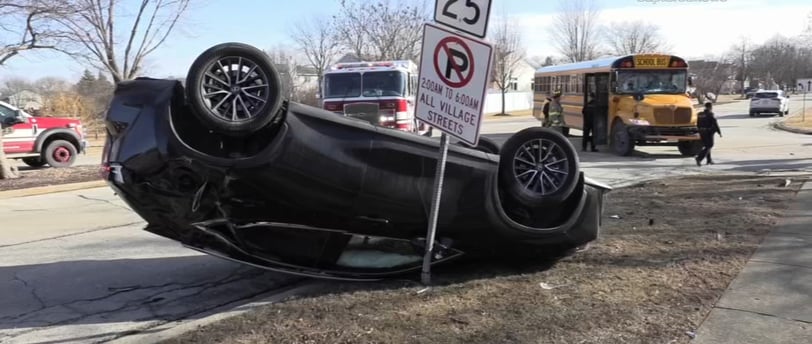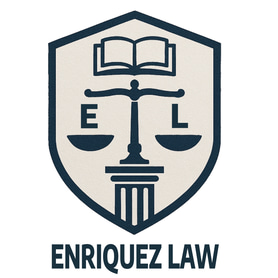A Deeper Look at Liability in Student Accidents: The case of St Mary's Academy v Carpitanos, G.R. No. 143363
The tragic death of a student, Sherwin Carpitanos, during a school enrollment campaign has brought to light crucial questions about liability when accidents occur outside the immediate supervision of school premises. This case, which reached the highest court on appeal via certiorari, delves into the nuances of parental authority, proximate cause, and ultimately, who bears the responsibility for unforeseen tragedies.
5/29/20253 min read


The legal battle began when Sherwin's parents sought damages for their son's death, naming James Daniel II (the minor driver), his parents, the vehicle owner Vivencio Villanueva, and St. Mary's Academy as defendants. The Regional Trial Court initially found St. Mary's Academy principally liable, with James Daniel Sr. and Guada Daniel subsidiarily liable. James Daniel II, being a minor, was absolved, and Vivencio Villanueva was cleared of any liability.
The Court of Appeals affirmed the trial court's decision, prompting St. Mary's Academy to appeal to the Supreme Court.
The Fateful Enrollment Drive
In February 1995, St. Mary's Academy of Dipolog City was conducting an enrollment drive. As part of this campaign, Sherwin Carpitanos, a student, joined a group visiting other schools. On the day of the accident, Sherwin and other high school students were riding in a Mitsubishi jeep owned by Vivencio Villanueva, driven by 15-year-old James Daniel II, also a student of the academy. The jeep allegedly "turned turtle" due to reckless driving, leading to Sherwin's fatal injuries.
The Core Legal Question: Who is Liable?
St. Mary's Academy's appeal centered on two key issues:
Did the Court of Appeals err in holding the petitioner liable for damages?
Did the Court of Appeals err in affirming the award of moral damages against the petitioner?
The Supreme Court's Ruling: A Reversal
The Supreme Court ultimately reversed the decision of the Court of Appeals, finding that St. Mary's Academy was not liable for Sherwin Carpitanos' death.
While acknowledging that Article 218 of the Family Code places special parental authority on schools and their administrators over minor children under their supervision (extending to authorized activities outside school premises), the Court emphasized the critical element of proximate cause.
Proximate Cause: The Deciding Factor
The Court highlighted that for liability to attach, the act or omission considered negligent must be the proximate cause of the injury. Proximate cause is defined as "that cause, which, in natural and continuous sequence, unbroken by any efficient intervening cause, produces the injury, and without which the result would not have occurred."
In this case, the respondents (including Sherwin's parents and the Daniel spouses) admitted that the immediate cause of the accident was the detachment of the steering wheel guide of the jeep, not the negligence of St. Mary's Academy or even the reckless driving of James Daniel II. The traffic investigator's report and testimony, which went undisputed, corroborated this fact.
The Court reasoned that since the cause of the accident was a mechanical defect in the jeep, and not the negligence of the school authorities or the minor driver's recklessness, the school's actions (such as allowing a minor to drive or not having a teacher accompany the students) were considered remote causes. Between the remote cause and the injury, an intervening efficient cause (the mechanical defect) broke the direct causal connection to the school's alleged negligence.
Who, Then, is Responsible?
The Court pointed out that there was no evidence that the school allowed James Daniel II to drive the jeep. Instead, it was Ched Villanueva, the grandson of the jeep's owner Vivencio Villanueva, who had control of the vehicle and allowed the minor to drive.
Consequently, liability for the accident, whether due to the minor driver's negligence or the mechanical defect, primarily falls on the minor's parents (for the minor's actions) or the registered owner of the vehicle (for the vehicle's condition). The Court reiterated that the registered owner of a vehicle is primarily responsible for injuries caused to third persons while the vehicle is being driven.
Implications of the Ruling
This decision underscores the importance of establishing a clear causal link between alleged negligence and the resulting injury. While schools indeed bear special parental authority, this authority does not automatically translate to liability when an independent and unforeseen event acts as the direct cause of an accident.
The case was remanded to the trial court to determine the liability of the other defendants (excluding St. Mary's Academy), specifically focusing on the responsibility of the minor driver's parents and the registered owner of the vehicle.
This ruling serves as a crucial reminder for parents, vehicle owners, and institutions alike about the scope of their responsibilities and the legal principles that govern liability in unforeseen circumstances.
Disclaimer: This blog post provides general information and should not be considered legal advice. It is always best to consult with a qualified legal professional for specific situations and legal guidance.
